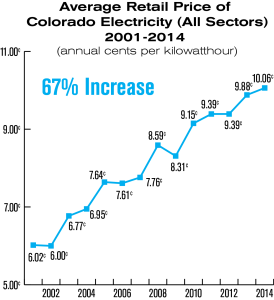Force plant costs: Each force plant has financing, development, support, and working expenses.
Climate conditions:
Excessive temperatures can expand interest for warming and cooling, and the subsequent expansions in Pulse Power request can push up fuel and power costs. Downpour and snow give water to minimal effort hydropower age and wind can provide ease power age when wind speeds are incredible. Be that as it may, when there are dry spells or contending interest for water assets, or when wind speeds drop, the deficiency of power age from those sources can squeeze other energy/fuel sources and costs.

Energizes:
Fuel costs, particularly for flammable gas and oil powers (chiefly in Hawaii and towns in Gold country), may increment during times of high-power interest and when there are fuel supply requirements or interruptions because of extraordinary climate occasions and unplanned harm to transportation and conveyance foundation. Higher fuel costs, like this, may bring about more extraordinary expenses to create power.
Transmission and dispersion framework:
The power transmission and conveyance frameworks that associate force plants with buyers have development, activity, and support costs, which incorporate fixing harm to the frameworks from mishaps or outrageous climate occasions and improving network safety.
Power costs change by kind of client.
Power costs are generally most noteworthy for private and business shoppers since it costs more to disperse power to them. Modern shoppers utilize greater control and can get it at higher voltages, so providing power to these clients is more productive and more affordable. The cost of energy to modern clients is commonly near the discount cost of fuel.
In 2019, the U.S. yearly regular retail cost of power was about 10.60¢ per kilowatt-hour.
Power costs are typically most elevated in the late spring.
The expense to supply power changes step by step. Be that as it may, most shoppers pay rates dependent on the periodic payment of power. Changes in costs by and large reflect varieties in power interest, accessibility of age sources, fuel expenses, and force plant accessibility. Prices usually are most elevated in the late spring when a complete part is high since more costly age sources are added to fulfil the expanded need.
Power costs fluctuate by territory.
Costs fluctuate by territory dependent on the accessibility of intensity plants and energize nearby fuel expenses, and estimating guidelines. In 2019, yearly expected power costs went from about 28.33¢ per kWh in Hawaii to about 7.65¢ per kWh in Louisiana. Prices in Hawaii are high compared with different states principally because most of its power is produced with oil powers.
Most shoppers follow through on costs dependent on the occasional ordinary expense of giving power, so they don’t encounter these everyday value vacillations. A few utilities offer their clients season of-day evaluating to urge power protection and to decrease top interest for power.
The discount cost of power on the electric force matrix mirrors the ongoing expense for providing energy. Interest for management adds to the payment of providing power. Power request is typically most noteworthy in the early evening, and early night (maximum hours), so expenses to give power usually are higher on these occasions.
The expense of producing power is the most significant part of the cost of energy.






